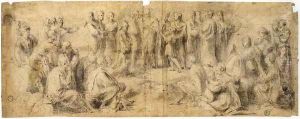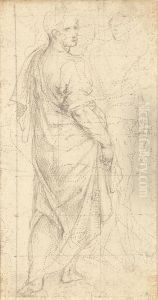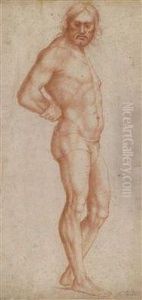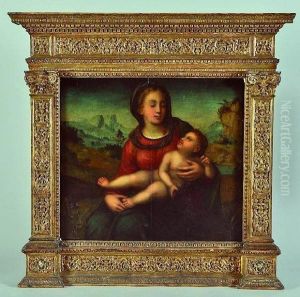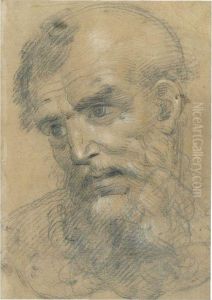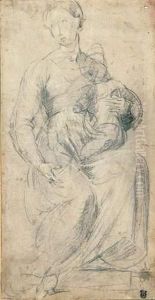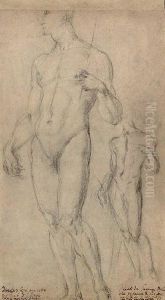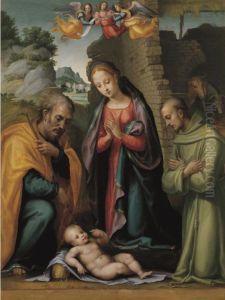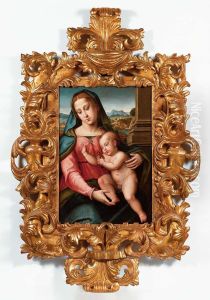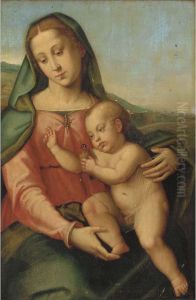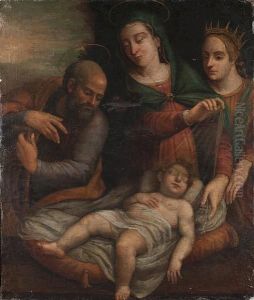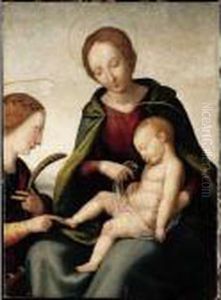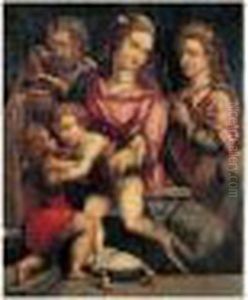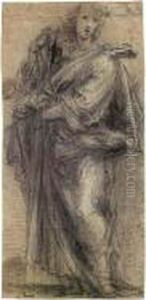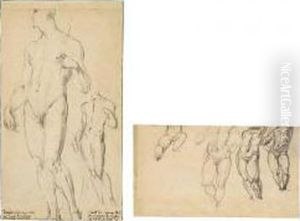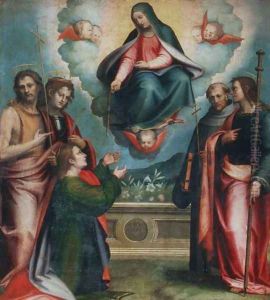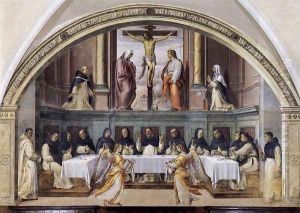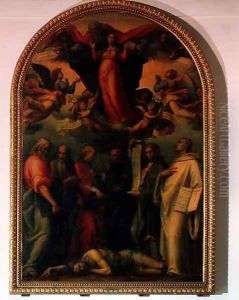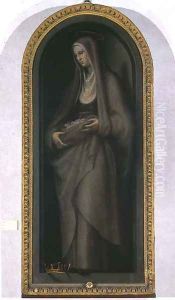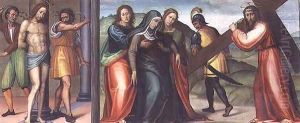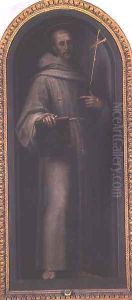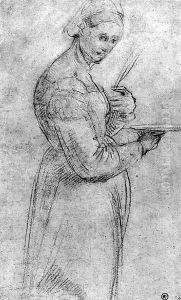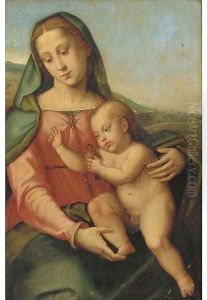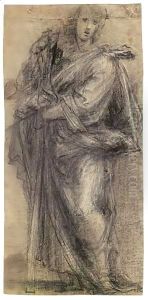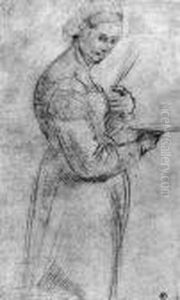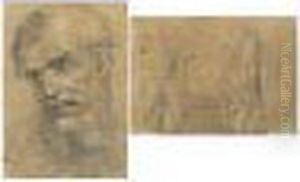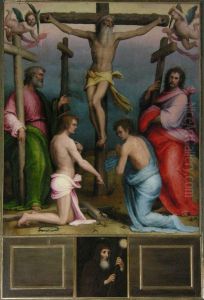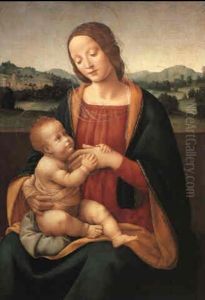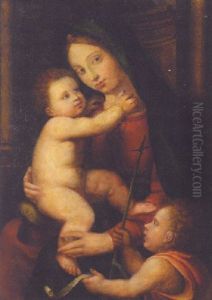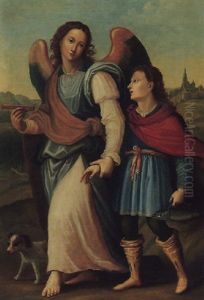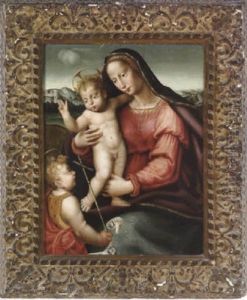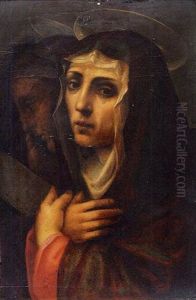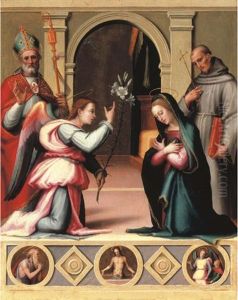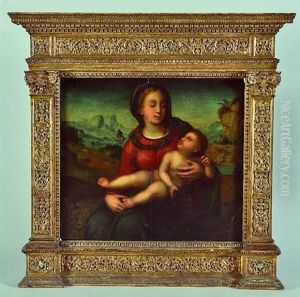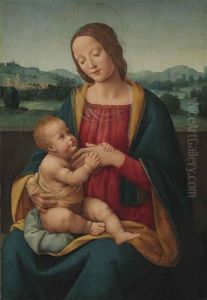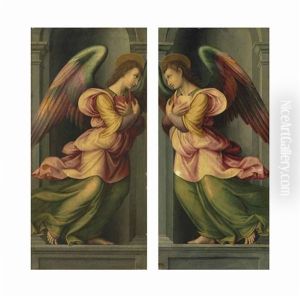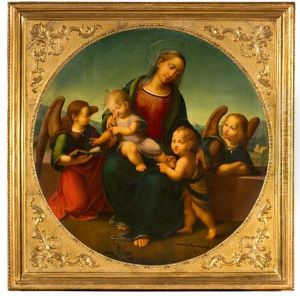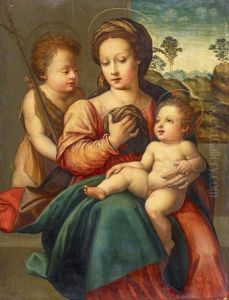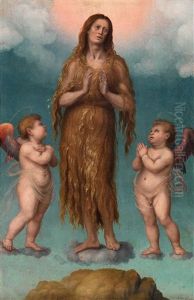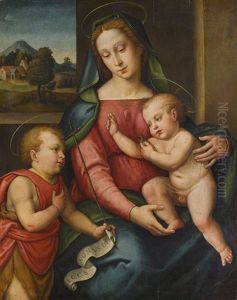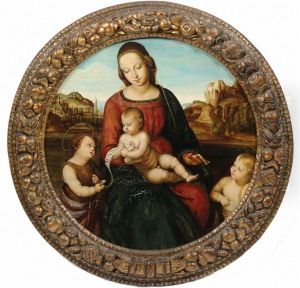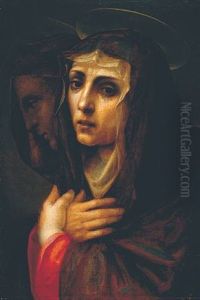Giovanni Antonio Sogliani Paintings
Giovanni Antonio Sogliani was an Italian painter of the Renaissance, born in 1492 in Florence, Italy. He was a notable artist of his time, although not as widely recognized as some of his contemporaries. Sogliani's work was deeply influenced by the artistic environment of Florence, a city that was a cradle of Renaissance art and thought. He trained under Lorenzo di Credi, a prominent Florentine painter from whom he inherited a keen attention to detail and a devotion to the ideals of beauty and harmony that defined the Renaissance aesthetic.
Sogliani's career was marked by his versatility and mastery in handling religious subjects, which were a significant part of his oeuvre. His works are characterized by their serene and delicate figures, clear composition, and vibrant use of color. One of his most famous works is the 'Last Supper' fresco for the convent of San Salvi in Florence, which stands as a testament to his skill in composing large-scale religious narratives. This particular work was highly regarded for its detailed portrayal of the apostles and has often been compared to the 'Last Supper' frescoes by other Renaissance masters.
Throughout his career, Sogliani remained active in Florence, contributing to the city's artistic legacy. He worked on various commissions for churches and convents, where his paintings and frescoes continue to be admired for their grace and spiritual depth. Despite the overshadowing fame of contemporaries like Leonardo da Vinci, Michelangelo, and Raphael, Sogliani's contributions to the Italian Renaissance remain valuable for their reflection of the period's artistic ideals and religious devotion.
Sogliani died in 1544 in Florence, leaving behind a body of work that, though not as prolific as some of his peers, showcases the breadth of his talent and his dedication to the Renaissance movement. His art continues to draw interest from scholars and art lovers alike, offering insight into the nuanced and diverse landscape of 16th-century Italian art.
